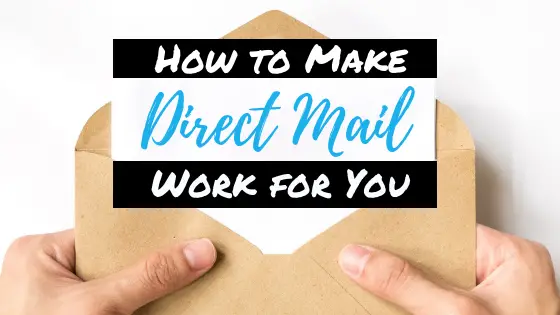 How To Make Direct Mail Work For You
How To Make Direct Mail Work For You
Direct mail is a tried and true form of advertising, and when it’s used correctly and strategically, it will work for almost every business, large or small. There are numerous advantages to using direct mail: it’s inexpensive, gives you complete control over messaging and recipients, and its results are easy to measure. But again, you’ve got to be smart going in to get the results you need to build your business.
Target Practice: Who are you trying to reach?
The best way to reach any potential client is to put yourself in their shoes. Who are they? What do they want? When do they want it? How much are they willing to pay? Answer these questions and you are well on your way to building a successful direct mail marketing campaign. From that point, you will need to build a mailing list of recipients you want to target. You can either use your own list, purchase a mailing list from a reputable source, or create a list that is a combination of both. It’s crucial that your list is clean. Duplicate and incomplete addresses, or addresses not in your service area, for example will only waste money, so better to start fresh, and clean up your list periodically.
Well, isn’t that special: Stand out from your competition.
Have you ever noticed that one piece of direct mail looks a whole lot like most other pieces of direct mail? Of course, it’s wise to do your research and find out what’s worked for other businesses, but don’t be afraid to be different. Once your piece makes it in to the hands of a potential customer, you have only seconds to make an impression. This is the time to use great design (white space, quality images, and layout) and text that will evoke an emotion in the reader. Once you’ve got their attention, go ahead and sell yourself- there is something that makes you special, figure out what that something is, and play it up in your direct mail (and all of your other advertising too). Avoid including tons of text, using hard-to-read fonts, or too many fonts. Never bad-mouth your competitors; it will do nothing to build trust with your reader.
Think about what differentiates you from your competition, and spell it our for your clients, and potential clients through direct mail.
The Good, The Bad, & The Terrible: Examples of Direct Mail
I received all four of these today. A great cross-section of direct mail data, right in my own mailbox! I will use one, immediately recycle another one, and just wonder about the third one for a while.


Should you measure? How to track the results of your direct mail campaign.
You should, but how? Decide what makes sense for you. If you are just tracking calls that were placed because of your piece, you may not have the whole story. You should be tracking actual sales based on your mailing (or subsequent calls). If you’re getting 10 calls and making 9 sales, you’re doing something right on the call, but not with the mailer. If you’re getting 1,000 calls but only selling a small percentage, make sure that your mailer is accurate (the client will get what is promised) and take a close look at how calls are being handled.
How do you measure the results of your direct mail campaign? Direct calls and visits to a phone number or web page exclusive to your mailer, and use coupon codes, augmented reality, QR codes, or “where did you hear about us” questions.
Smart direct mail will bring great returns. Period. And direct mail campaigns work best when they include multiple mailings, or follow-ups. Because it’s so targeted, used alone direct mail has a high response rate (about 3.4% according to the Direct Marketing Association’s June, 2012 study), but it’s usually even better to use direct mail in some combination with online and social media marketing and other print advertising.






